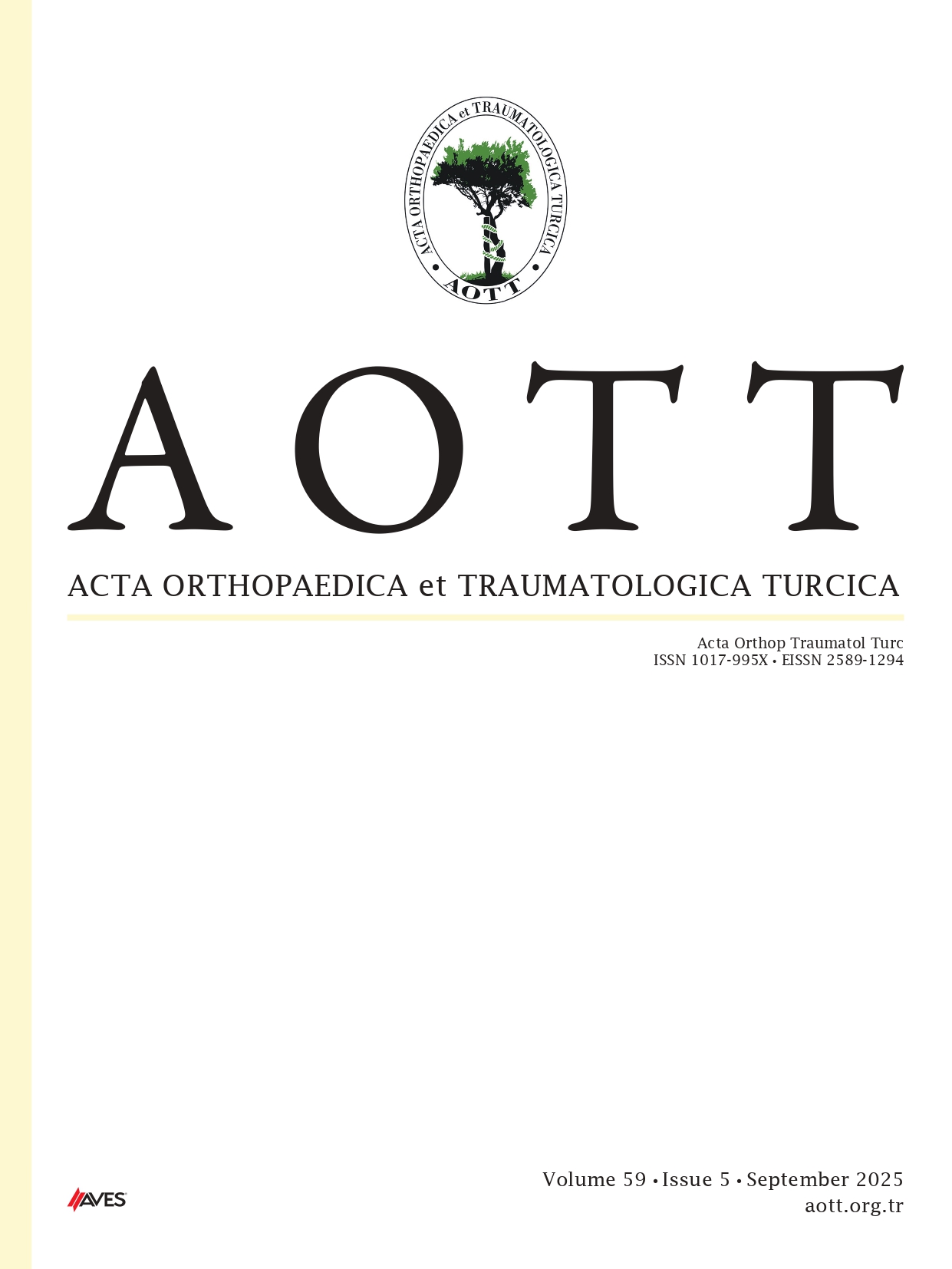Objective: Acromioclavicular (AC) joint instability remains a challenging clinical problem, particularly in chronic cases where both vertical and horizontal stability must be restored. Traditional techniques have limitations in addressing multidirectional instability and minimizing implant-related complications. The aim of this study was to evaluate the clinical and radiological outcomes of a combined coracoclavicular (CC) ligament and transacromial capsule reconstruction technique in patients with chronic AC joint instability.
Methods: A retrospective study was performed on 40 patients who underwent AC joint reconstruction at a single center from 2019 to 2023. Radiological outcomes (clavicle-coracoid distance) were evaluated preoperatively, immediately postoperatively, and at the last follow-up (6 months). Functional results were assessed using the Constant, American Shoulder and Elbow Surgeons score (ASES), and Disabilities of the Arm, Shoulder, and Hand (DASH) score. Data were analyzed using SPSS v28.0. T-tests and repeated measures of Analysis of Variance (ANOVA) were employed to compare outcomes, with significance set at P < .05.
Results: The preoperative mean CC distance was 20.3 ± 3.4 mm. Early postoperative measurements showed a significant reduction in CC distance, with a mean of 9.5 ± 1.5 mm in the capsule reconstruction group compared to 10.5 ± 1.6 mm in the non-reconstruction group (P=.053). At the 6-month follow-up, the late postoperative CC distance was maintained at 10.1 ± 1.6 mm in the reconstruction group, while it increased to 14.4 ± 2.0 mm in the non-reconstruction group (P < .001). The mean ASES score was 87.1 ± 8.1. The mean Constant score was 86.2 ± 7.6. Pain levels, evaluated using the Visual Analog Scale (VAS), decreased from a mean of 5.8 ± 1.2 preoperatively to 2.1 ± 1.0 postoperatively, indicating significant pain relief and improved functionality. No hardware failure or infection was noted. About 12.5% of patients experienced short-term anterior knee pain.
Conclusion: The results of this study demonstrate that combined CC ligament and transacromial capsule reconstruction improves radiographic outcomes by maintaining the clavicle-coracoid distance and enhances functional scores (ASES and Constant) in patients with chronic AC joint instability. Addressing both vertical and horizontal instability appears to contribute to better short-term clinical recovery. Further studies with larger sample sizes and longer follow-up are needed to confirm these findings.
Level of evidence: Level III (Retrospective Comparative Study).
Cite this article as: Bascı O, Duymaz B, Erdogdu IN, Ozkan MH. Combined coracoclavicular ligament and transacromial capsule reconstruction for chronic acromioclavicular joint instability: clinical and radiological outcomes. Acta Orthop Traumatol Turc., 2025;59(3):170-178.



.png)
.png)
